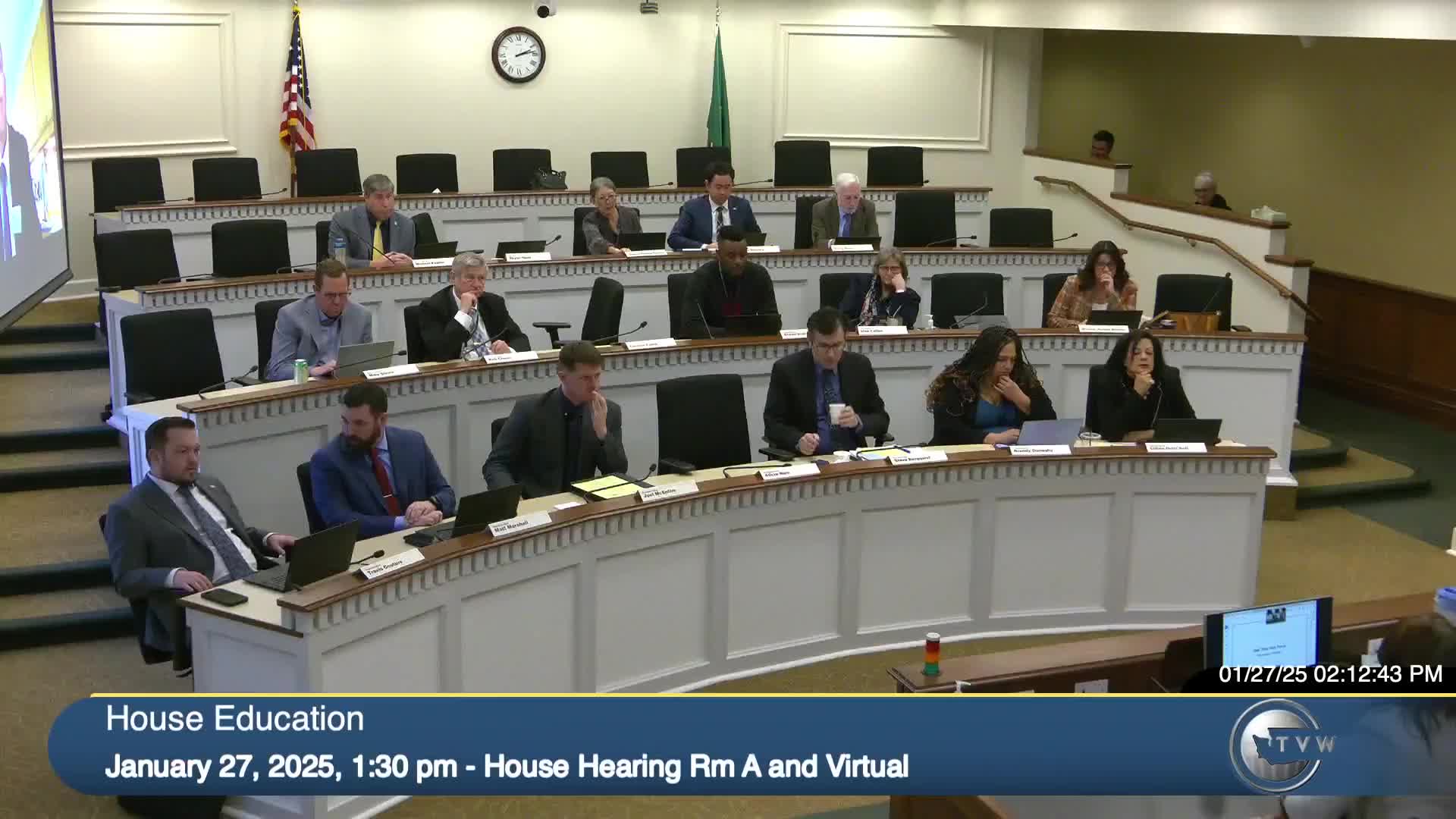Puyallup summarizes multi-stakeholder bell schedule task force amid bus-driver shortage
January 27, 2025 | Education, House of Representatives, Legislative Sessions, Washington
This article was created by AI summarizing key points discussed. AI makes mistakes, so for full details and context, please refer to the video of the full meeting. Please report any errors so we can fix them. Report an error »

Puyallup School District director Maddie Names told the committee the district initiated a multi-month bell schedule task force (2022'2023) primarily to address an acute bus-driver shortage and to produce more reliable, equitable routes across the district.
"Our driving force was to ensure equitable and sustainable transportation for all students," Names said, adding that the district serves about 23,000 students across 54 square miles with 22 elementary schools, seven junior highs and four high schools.
The nut graf: district leaders said three-tier bell schedules, ride-time limits and extracurricular timing (especially athletics) were the largest constraints; childcare and sibling schedules also complicated later-start proposals.
Names explained the task force included about 30 members: transportation, operations, equity, HR, principals, union leaders, parents and students. The group modeled multiple scenarios and narrowed them to three main options. "Bell time transitions affect all facets of a school district and require strong partnerships for optimum success," she said.
Superintendent John Palm described technical tradeoffs: Puyallup adopted three tiers with minimum spacing between tiers to reduce driver needs and on-time failures. The final schedule had junior highs starting at 7:30 a.m., high schools at 8:25 a.m., and elementary start times staggered at 8:35 or 9:30 a.m.; the district retained some late-day options for ninth graders who access high-school programs. Palm said the changes reduced the number of drivers required while meeting constraints around academic schedules and extracurriculars.
Ending: Puyallup leaders said the district could provide route maps and modeling to legislative staff and emphasized that bell-time changes require substantial community engagement and time to get right.
"Our driving force was to ensure equitable and sustainable transportation for all students," Names said, adding that the district serves about 23,000 students across 54 square miles with 22 elementary schools, seven junior highs and four high schools.
The nut graf: district leaders said three-tier bell schedules, ride-time limits and extracurricular timing (especially athletics) were the largest constraints; childcare and sibling schedules also complicated later-start proposals.
Names explained the task force included about 30 members: transportation, operations, equity, HR, principals, union leaders, parents and students. The group modeled multiple scenarios and narrowed them to three main options. "Bell time transitions affect all facets of a school district and require strong partnerships for optimum success," she said.
Superintendent John Palm described technical tradeoffs: Puyallup adopted three tiers with minimum spacing between tiers to reduce driver needs and on-time failures. The final schedule had junior highs starting at 7:30 a.m., high schools at 8:25 a.m., and elementary start times staggered at 8:35 or 9:30 a.m.; the district retained some late-day options for ninth graders who access high-school programs. Palm said the changes reduced the number of drivers required while meeting constraints around academic schedules and extracurriculars.
Ending: Puyallup leaders said the district could provide route maps and modeling to legislative staff and emphasized that bell-time changes require substantial community engagement and time to get right.
View full meeting
This article is based on a recent meeting—watch the full video and explore the complete transcript for deeper insights into the discussion.
View full meeting
